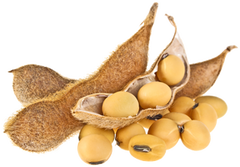Panel discussion on...
Alternative proteins
A discourse on alternative proteins in the food and drink industry
This article presents consumer attitudes and behaviors regarding alternative protein. This will be discussed in relation to meat and dairy products whilst exploring the benefits and challenges of alternative protein, and the ever-expanding possibilities of future developments in this area.
Consumers perceptions of meat and dairy consumption
Consumers have displayed increasing concern over the relationship between their diet and the environment over the last several years. The number of consumers across the globe that are making active attempts to reduce their meat and dairy intake continues to grow. With plant based and alternative protein products becoming increasingly more popular, more consumers identify with and appreciate the benefits of a meat-free/ flexitarian diet now than ever before. When consumers were asked if they eat meat on a regular basis 52% said yes, 36% said they sometimes do, and 12% stated they never eat meat.
Of those who did eat meat regularly, 62% of global consumers said they are either actively attempting to or considering reducing their meat intake over the next twelve months. There is a heightened consciousness around meat consumption and, the top three reasons why consumers said they did not eat meat on a regular basis was environmental concerns (80%), associations with less meat being healthier (74%), and concerns over animal welfare (58%).
The alternative dairy market has become well established in recent years. There has been much attention given to the healthiness and sustainability of dairy farming. 47% of global consumers said they eat/drink dairy alternative products and 45% of consumers said they consume these products as a source of protein. The top three reasons for consuming alternative dairy products were that plant-based products are healthier than regular milk products (71%), it is better for the environment (69%), and because consumers liked the taste of plant-based alternatives over regular milk products (66%). 70% of consumers who consumed alternative dairy said they did so because it is better for the environment and that it is healthier than regular milk.
Consumers are driven by price and taste. Taste and enjoyment are the main reasons for turning to food and drink products and these factors make it easier to be incorporated into consumer’s diets in the long-term. Irrespective of health and environmental concerns, consumers are unwilling to compromise on indulgence. The dairy market is no exception to this, 85% of consumers who drink alternative dairy said taste is the most important factor, followed by sustainability claims (75%). 60% of global consumers who eat/drink dairy alternatives say that it is important that dairy alternatives can be used the same as regular dairy products. Brands should continue to push the boundaries of innovation from a sensory perspective, focusing on the continued improvement of taste and texture whilst increasing range and variation of offerings.
Protein and alternative protein
Of the consumers who chose dairy alternative products, the top three plant ingredients consumers were most responsive to were almond (61%), soy (60%), and oats (56%).
It is important not to overestimate the sustainability of alternative protein, as it is hard to define what is more sustainable. There is no definitive answer to measure whether plant protein is more sustainable than dairy, fish, or meat proteins. The current state of the food supply chain is not sufficient to last, this is a consequence of several variables, including adverse weather conditions, challenges regarding distribution and population growth. Advances must be made within the food and drink industry to prevent malnutrition and other diet-related health problems.
It is important to consider that plant-based alternatives can lack the vitamins and minerals found in animal produce (i.e., vitamin b12, vitamin D). To overcome this, fortification to enhance nutrients in plant-based products is key. The plant-based industry must address normalizing the market, as there can be a health halo surrounding plant-based which makes some consumers feel it is elitist. For this reason, the industry should look to move focus away from health and sustainability and place a higher focus on taste, nutrients and affordability keeping the evolution of flavor at the forefront of production. This is especially crucial during the cost-of-living crisis where consumers are looking to maximize value for money.
The pros and cons of alternative proteins
Alternative proteins are versatile and ever-changing, which offers endless opportunity for development to enhance the nutrients, flavor, and texture of products. Plant-based and food technology alternatives to animal protein can include the use of plants, algae, fungi, insects, and cultured (lab-grown) meat. Though there are endless possibilities using these technologies, it is important to note that some consumers may have apprehensions to these methods.
Consumers are concerned by the challenges of alternative protein, regarding the safety of their long- and short-term health (and the interaction this has with the gut microbiome) and the wider environment. Because alternative protein is a new and progressive technology there is limited research in this area available which can lead to apprehension from consumers.
Plant-based protein causes significantly less environmental damage than meat and dairy products when it comes to producing less greenhouse gas emissions. Having a smaller carbon footprint can be perceived as more efficient. Eating meat fuels climate change as well as polluting landscapes and waterways, not to mention the damage of methane emissions from livestock. Brands and manufacturers should look to address initiatives that eradicate carbon emission levels.
On the other hand, farming of alternative proteins can be just as damaging, exhausting large quantities of water during the growing process, land and can potentially destroy natural ecosystems. For example, almond farming requires large quantities of water consumption and can be damaging to local bee populations; because of the pesticides released which weakens the immune system of bees and makes them more susceptible to disease.
Conclusions
As with most things, there are both advantages and disadvantages to alternative proteins. However, it is a rapidly growing area of the industry which will only continue to grow in popularity and demand. Especially as our current food habits and resources are unsustainable for the future. This is a driving force for the development of alternative proteins and more transparent discussions must follow suit to provide clarity and reassurance to consumers. Alternative proteins should be marketed as more accessible and inclusive to everyone, so they are not seen to conflict the dietary interest of consumers. With more education and transparency to the source, formulation, and ingredients of alternative proteins it should be seen as an exciting addition to consumers ever evolving diet and lifestyle.
Panelists
References and notes
- COMMISSION IMPLEMENTING REGULATION (EU) 2021/882; (EU) 2022/169; (EU) 2022/188; (EU) 2023/5; (EU) 2023/58; and (EU) 2021/1975
- https://doi.org/10.1016/j.foodchem.2019.126022
- https://doi.org/10.1016/j.cofs.2021.08.003
- https://doi.org/10.1016/j.tifs.2022.02.021
- doi: 10.3390/ijerph17072427
- https://doi.org/10.1016/j.appet.2021.105832
- https://library.wur.nl/WebQuery/wurpubs/fulltext/258042



















